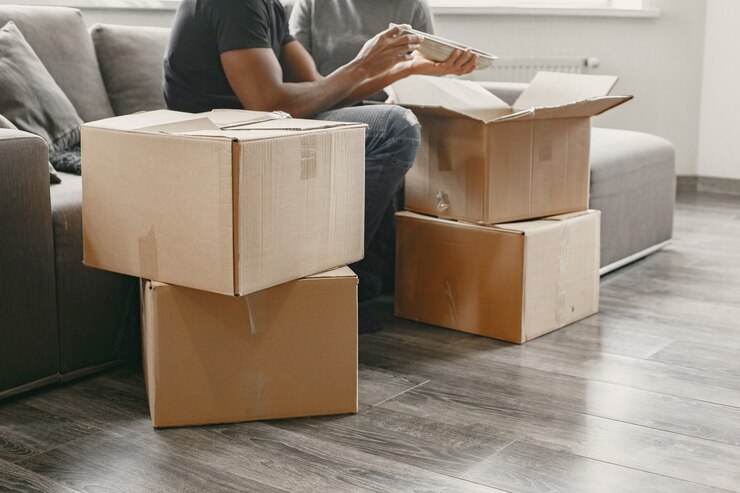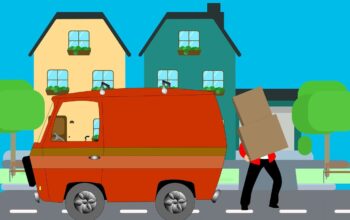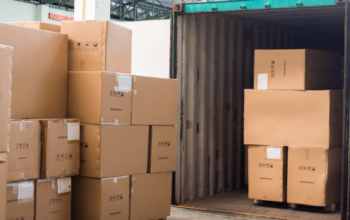What does a move consist of? It consists of large parts and smaller elements. The basic components are packaging, transport, and movers. And intermediate—all that accompanies them and binds them into a single chain.
In any sphere, there are sometimes revolutions; without them, no business can exist or develop. And relocations are no exception. True, revolutions here occur without noise and even more so without bloodshed. Most of the changes concern the very small elements with which we started our conversation.
Sometimes, the changes are noticeable only to professionals. Nevertheless, ordinary customers also feel the innovations on themselves. These important little things can dramatically affect the course of the move—for example, to reduce the time spent on carrying heavy loads. Or make fragile items suffer much less on the road. How? Our partners from A+ Moving helped us to answer all the questions. We’re about to find out.
Innovations in Packing: Unveiling the Three Magic Materials
Craft bables, probable and valuable are three magic words that may at first stump the person moving. But an expert will quickly explain (and show) what they are. In fact, behind the unfamiliar names, there are three newest packing materials. All three are made based on air-bubble film combined with other elements.
- Alubable is a combination of the film with aluminum foil,
- Craftable with paper,
- Foambable with polyethylene foam.
Accordingly, the properties of all materials are changed for the better.
- Craft bubbles not only protect from mechanical damage but also absorb moisture well, so they are used to pack stained glass windows, paint, and even antique furniture.
- Penobable is an almost perfect shock absorber. It has increased strength and outstanding cushioning properties, which is very important when transporting fragile goods.
- Alubable is an excellent thermal insulator. It protects things for which sharp temperature changes are dangerous during winter moves.
Besides, all these materials can be used instead of the usual air-bubble film or instead of cardboard. And it should be said—quite reasonably. Craft bubbles, foam bubbles, and all bubbles will protect your property much better. And if you have a lot of breakable or antique items in your home, choose the latest packaging. The risks will be minimized.
Unfortunately, not all carriers offer it to customers. Some believe that you can make a trivial move, especially a flat move, with proven methods like wrapping paper. Thus, the range of protective equipment is also a good way to determine how qualified the carrier is and whether he is trying to develop his business.

Smart Labeling: Revolutionizing How We Organize Moves
What we take to a new home not only needs to be packed but also signed. Otherwise, we will have to call a psychic to find the right one among 15 identical boxes. For a long time, we used ordinary pens or felt-tip pens for this purpose—convenient and cheap. But if the cardboard is exposed to rain, such marks fade. They are also banned in the process. It would be logical to invent a more durable solution—and it was found. This is multi-coloured adhesive tape and inventory stickers.
For boxes with fragile things—red, for packing with books—blue, for other small things—green… When working with tape of different colours, the most important thing is to stick to the system. And, of course, you should determine in advance how many colours you will need and what they mean. This method is quite often used for flat moves (as a rule, two or three colours are enough).
However, when moving an office, inventory stickers are often more convenient. Each of them is labelled with either the number of the workplace or the name and surname of the employee to whom the items belong.
Modern Tools for Moving Heavy Items
A good loader will not complacently rely on his physical strength alone. He will structure the job so that he tires as little as possible and gets as much done as possible. What is needed for this? A few special tools!
- First of all, of course, belts. This is the simplest device for lifting more weights at the same time. According to the rules of loading and unloading works, you may carry no more than 50-80kg in your hands. Heavier things must be lifted with the help of equipment designed for this purpose.
- In order not to damage expensive parquet or other flooring, movers use a trolley. This is a special trolley with soft wheels. It is used to transport weighty objects like metal fireproof cabinets. Of course, the trolley will not go down the stairs, but in long corridors, it is indispensable—you do not have to carry a heavy safe on your hands for 10-20 metres.
- Another solution to simplify the move is the piano sled. Behind this strange phrase is a sturdy wooden stand on which the piano is placed when travelling up and down stairs. By using it and the straps carefully and skilfully, a musical instrument can be carried out of almost any room without excessive effort. But it is unlikely that you will be able to do it yourself—you need experience and skill to work with piano sleds.
Without such devices, your move would take several hours longer. Imagine that the movers would have to move all things literally on their backs… And how much would such labour-intensive work cost? More expensive than it is now. That means that various devices affect both the speed and the price of moving. And the more of them are invented, the easier our lives will eventually become.
Conclusion
Evolution isn’t necessarily about innovation and nanotechnology. Many of the things that make moving easier are quite simple. A revolution is not necessarily a global upheaval. A huge proportion of ideas are taken to work incrementally. The professional’s job is to keep an eye on the diversity and choose the best.
Related Posts












